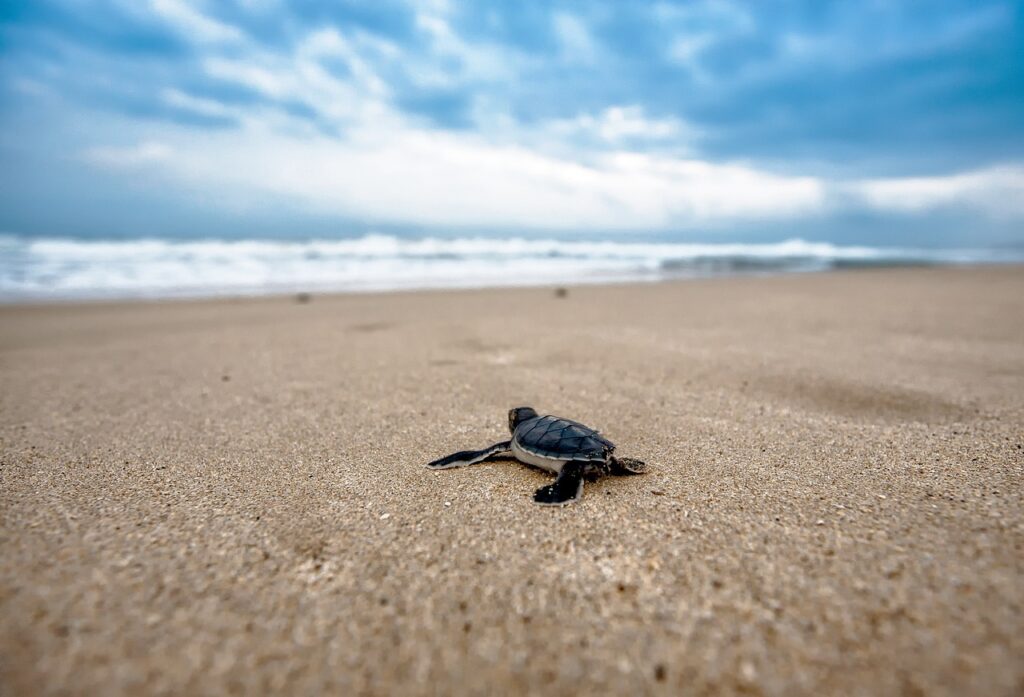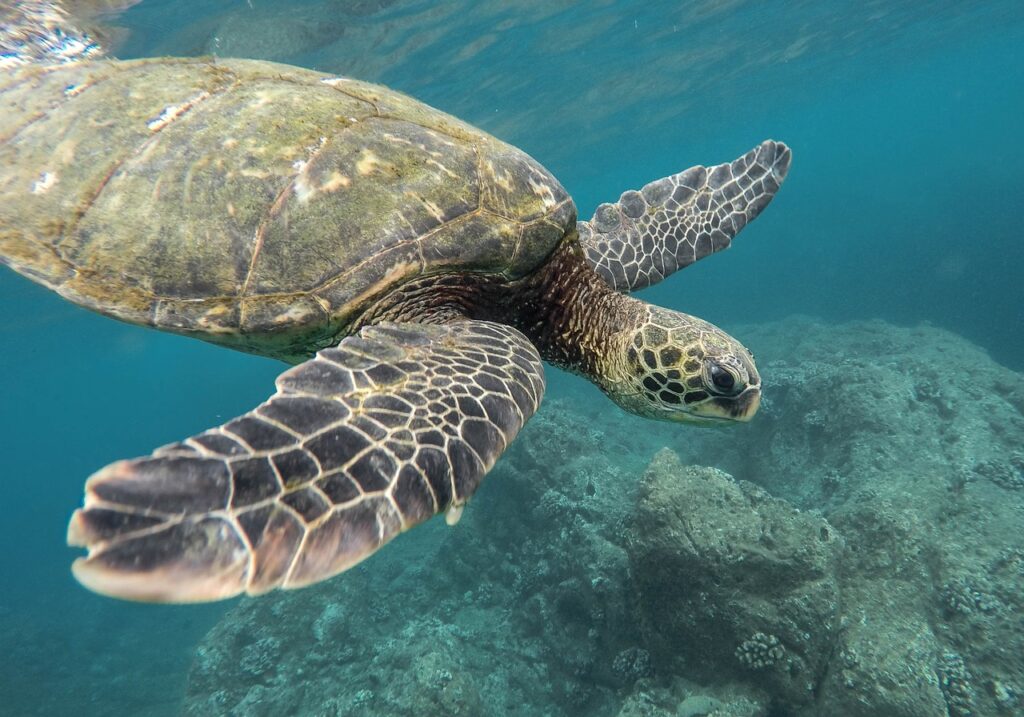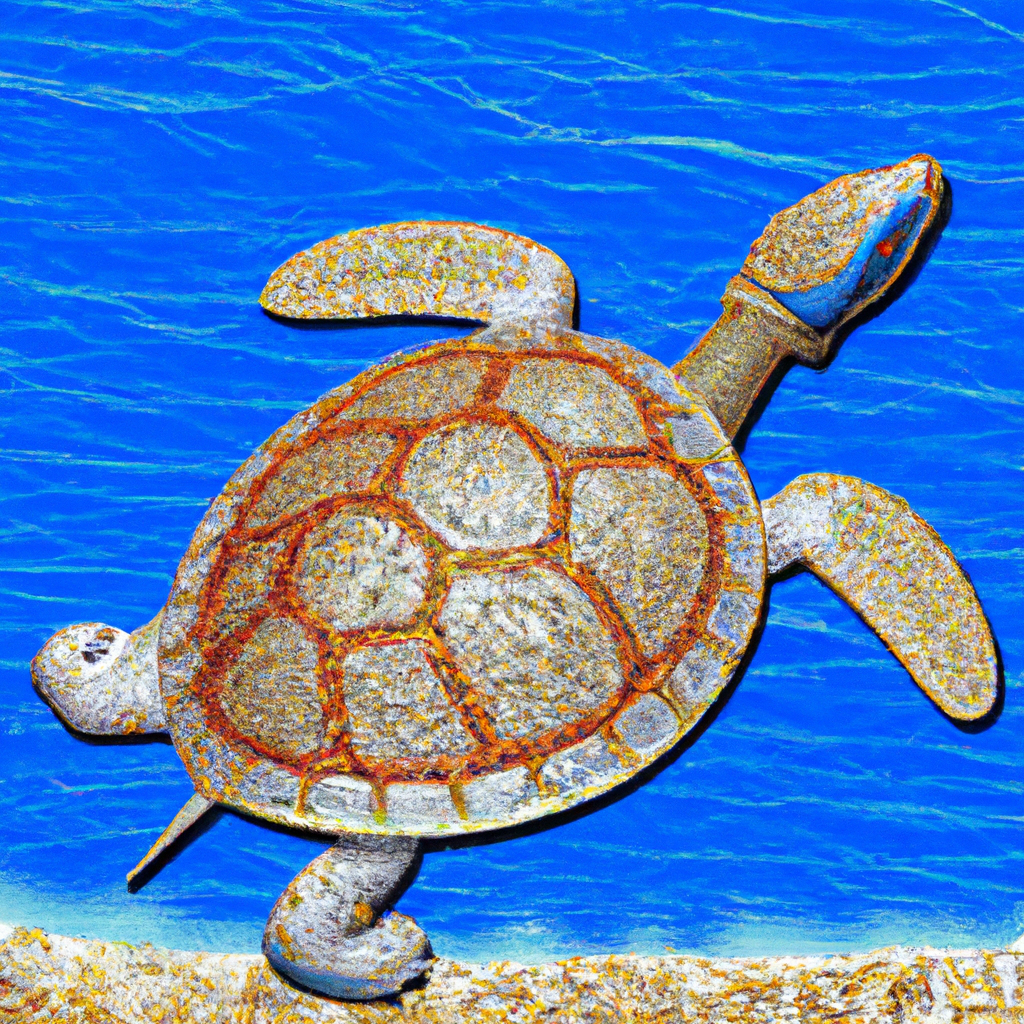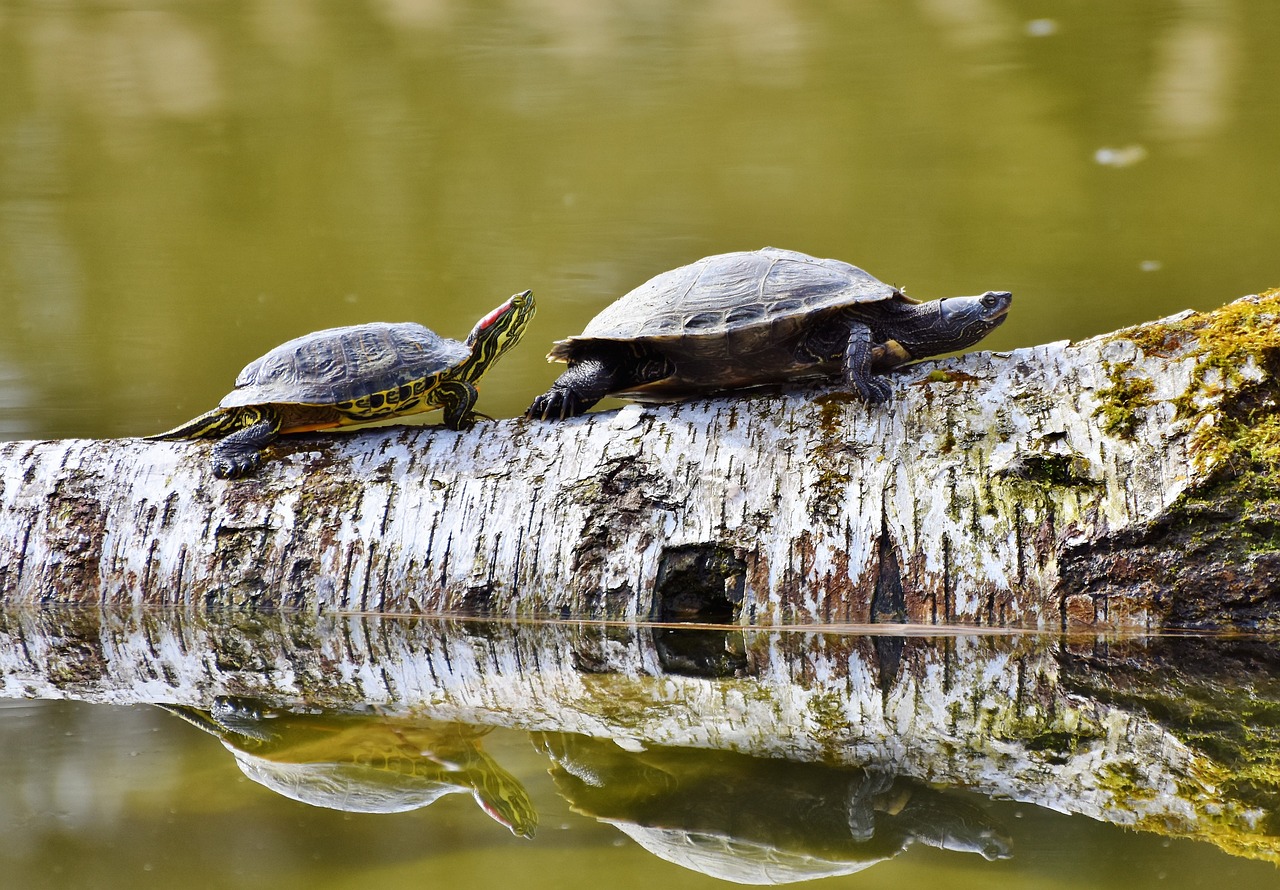In this spotlight article, we’ll be taking a closer look at a fascinating turtle species called the Diamondback Terrapin. Known for their distinctive shell patterns and adaptability to both freshwater and brackish habitats, these unique creatures have captured the attention of turtle enthusiasts around the world. We’ll explore their special characteristics, discuss their care requirements, and uncover why the Diamondback Terrapin is a popular choice among reptile lovers. So, grab a seat and get ready to learn all about these remarkable turtles.

Physical Appearance
Size and Weight
The Diamondback Terrapin is a medium-sized turtle, with males typically measuring around 5-7 inches in length and females ranging from 7-9 inches. The weight of these terrapins varies depending on their age and gender, with adult males weighing between 1-1.5 pounds and adult females weighing between 1.5-2.5 pounds.
Shell and Coloration
One of the most distinct features of the Diamondback Terrapin is its shell. Their shells are hard and dome-shaped, providing essential protection. The upper part of the shell, known as the carapace, is characterized by a pattern of concentric rings and radiant yellow markings, resembling the diamond pattern that gives these turtles their name. The coloration of the carapace can vary, ranging from dark brown to black, with some individuals having speckles or blotches of yellow.
Head and Face
The Diamondback Terrapin has a unique head and face structure. Their heads are relatively large compared to their bodies, and they have a sharp, pointed nose. Their faces are adorned with bright yellow stripes on either side, which add to their striking appearance. Additionally, their eyes are positioned on the sides of their heads, allowing for a wide field of vision.
Limbs and Feet
The limbs of the Diamondback Terrapin are well-adapted for both land and water. They have four stout legs, each with five webbed toes that enable them to swim efficiently. The front limbs are slightly shorter and more muscular than the hind limbs, aiding in digging nests or climbing onto logs or rocks. The feet have sharp claws that help them navigate various habitats and grasp their prey.
Habitat and Range
Coastal Habitats
The Diamondback Terrapin is primarily found in coastal habitats, such as salt marshes, tidal creeks, and mangrove swamps. These turtles are well-suited to brackish and saltwater environments, where they spend a significant portion of their lives. They are considered semi-terrestrial, meaning they require both land and water to survive. The intertidal zones of coastal areas provide them with abundant food sources and opportunities for basking.
Geographical Distribution
The Diamondback Terrapin is endemic to the eastern and southern coastal regions of the United States. Its range extends from Massachusetts to Texas, encompassing states such as New Jersey, Georgia, and Florida. Their distribution is influenced by factors such as temperature, salinity levels, and the availability of suitable nesting sites. Populations of Diamondback Terrapins can be found in both the Atlantic Ocean and Gulf of Mexico.
Behavior and Diet
Territorial Behavior
Diamondback Terrapins exhibit territorial behavior, particularly during the breeding season. Males establish and defend their territories to attract females for mating. When territorial disputes occur, they may engage in head bobbing, biting, or pushing matches with rival males. These territorial displays help maintain order and establish dominance within the population.
Feeding Habits
The diet of the Diamondback Terrapin consists mainly of small crustaceans, mollusks, and invertebrates. They are opportunistic feeders, using their powerful jaws and sharp beak to crush and consume their prey. These turtles are known to forage in tidal creeks and marshes, searching for food during high tide. They also consume various types of vegetation, such as marsh grasses and algae, providing additional nutrients to their diet.
Digestive System
Diamondback Terrapins have a specialized digestive system that allows them to tolerate brackish and saltwater environments. They possess salt glands, located near their eyes, which enable them to excrete excess salt ingested from their diet. This adaptation ensures that they can maintain their body’s internal balance despite consuming prey and water from saline habitats.
Reproduction and Lifespan
Mating and Nesting
Mating season for the Diamondback Terrapin usually occurs in the spring and early summer when the water temperature is optimal for courtship. Males actively pursue females, often engaging in elaborate courtship displays. Once a female is receptive to mating, the male mounts her from behind and clasps onto her carapace, a behavior known as “mating embrace.” Females can retain sperm for several months, allowing them to lay multiple nests with fertilized eggs.
Gestation Period
After mating, female Diamondback Terrapins search for suitable nesting sites, usually in sandy areas above the high tide line. They dig nests using their hind limbs and deposit clusters of 6-12 eggs. The incubation period lasts approximately 55-75 days, depending on environmental conditions, such as temperature and moisture. The gender of the hatchlings is determined by the incubation temperature, with cooler temperatures producing males and warmer temperatures producing females.
Hatchling Stage
When the eggs hatch, the tiny Diamondback Terrapin hatchlings make their way towards the water. During this vulnerable stage, they face many threats, such as predation and dehydration. Survival rates for hatchlings can be low, and they rely on their instincts to find suitable habitats and food sources. The young terrapins may spend the first few years of their lives in marshes or estuaries before migrating to deeper waters as they grow.
Lifespan
In the wild, Diamondback Terrapins can have a lifespan of 20-40 years, although some individuals have been known to live longer. Factors such as predation, habitat loss, and environmental changes can impact their lifespan. With proper care in captivity, these terrapins can live even longer, sometimes reaching 50 years or more.

Conservation Status
Threats to Survival
Diamondback Terrapins face several threats to their survival, primarily due to human activities. Habitat loss and degradation from coastal development has significantly impacted their populations. Pollution, such as runoff from agriculture or industries, can contaminate their habitats and affect their health. Additionally, they are susceptible to accidental bycatch in fishing gear and intentional harvesting for both the pet trade and as a food source.
Conservation Efforts
Due to declining populations, numerous conservation efforts are in place to protect the Diamondback Terrapin. Initiatives include habitat restoration projects, such as the preservation of coastal marshes and wetlands. Additionally, research efforts help gather valuable data on population dynamics and migratory patterns. Organizations and educational institutions collaborate to raise awareness about the importance of conserving this unique species and promote responsible stewardship of their habitats.
Endangered Status
While the Diamondback Terrapin is not currently listed as endangered, certain subspecies and regional populations are recognized as threatened or of special concern. Conservationists continue to monitor their populations and advocate for greater protection measures. It is crucial to address the various threats they face to prevent further declines and ensure the long-term survival of these remarkable turtles.
Legal Protection
Trade and Ownership Regulations
The Diamondback Terrapin is protected by various laws and regulations to prevent overexploitation and promote conservation. The U.S. Fish and Wildlife Service regulates and enforces the trade and ownership of these turtles. In many states, a permit is required for the possession, sale, or transportation of Diamondback Terrapins. These regulations aim to deter illegal trade and promote responsible ownership to safeguard wild populations.
Habitat Protection Laws
To protect the habitats crucial to the Diamondback Terrapin’s survival, federal and state agencies have implemented laws and regulations. Wetlands, including the salt marshes and tidal creeks favored by these turtles, are legally protected under programs such as the Clean Water Act and various state wetland conservation programs. These laws help maintain the integrity of these habitats and ensure their continued availability for Diamondback Terrapins.

Caring for Diamondback Terrapins
Choosing a Terrarium
If you are considering keeping Diamondback Terrapins as pets, it is essential to provide them with a suitable and spacious terrarium. A tank with a capacity of at least 30 gallons is recommended for a single adult terrapin. The enclosure should have both a dry area for basking and a large water area allowing for swimming and diving. Ensure the tank is escape-proof and equipped with appropriate filtration systems to maintain water quality.
Temperature and Lighting
Maintaining the correct temperature and lighting is crucial for the well-being of Diamondback Terrapins. The basking area should have a temperature gradient of 85-90°F (29-32°C), allowing the terrapin to regulate its body temperature effectively. UVB lighting is essential for their overall health, as it helps them produce vitamin D3 necessary for calcium metabolism. A combination of heat lamps and UVB bulbs can be used to provide the appropriate lighting conditions.
Water and Humidity
Diamondback Terrapins require access to clean, chlorine-free water for swimming and hydration. The water temperature should be kept around 75-80°F (24-27°C) to mimic their natural habitat. Regular water changes and filtration systems are necessary to maintain water quality. Additionally, providing a shallow dish of water for soaking in the dry area of the enclosure can help maintain humidity levels and aid in shedding.
Diet and Nutrition
Feeding Diamondback Terrapins a well-balanced diet is crucial for their health. Their diet should consist mainly of commercial turtle pellets designed specifically for aquatic turtles. Additionally, they should be offered a variety of live or frozen prey items such as shrimp, worms, and small fish to ensure they receive essential nutrients. Fresh leafy greens, fruits, and vegetables should also be provided as supplementary food sources. Calcium and vitamin supplements can be added to their diet to prevent deficiencies.
Health and Vet Care
Regular veterinary check-ups are recommended to ensure the overall health of Diamondback Terrapins. A veterinarian with experience in reptile care can conduct thorough examinations, monitor their weight, and address any health concerns. It is important to observe their behavior, appetite, and signs of illness, such as respiratory problems or shell injuries. Maintaining a clean and well-maintained enclosure, proper nutrition, and appropriate environmental conditions can help prevent common health issues.
Common Health Issues
Respiratory Infections
Respiratory infections can occur in Diamondback Terrapins if they are subjected to prolonged exposure to cold temperatures or if their enclosure has inadequate humidity levels. Symptoms may include wheezing, labored breathing, nasal discharge, or lethargy. Prompt veterinary care, potentially including antibiotics, is necessary to treat respiratory infections and prevent them from progressing to more severe respiratory conditions.
Shell Injuries
Shell injuries can occur due to various factors, including falls, territorial disputes, or improper handling. Damaged shells can lead to infections and impact the turtle’s mobility and overall health. Minor shell injuries can often heal with proper care and hygiene, while more severe injuries may require veterinary attention, including cleaning, debridement, and potential shell repair.
Eye Problems
Diamondback Terrapins may experience eye problems such as inflammation, swelling, or discharge. These issues can arise from irritation due to poor water quality, bacterial or fungal infections, or physical injuries. Maintaining clean water conditions and seeking veterinary care can help diagnose and treat eye problems effectively.
Parasitic Infestations
Internal and external parasites, such as worms and mites, can affect Diamondback Terrapins. Symptoms may include weight loss, decreased appetite, or changes in behavior. Regular fecal examinations and veterinary treatment are necessary to control and prevent parasitic infestations. Maintaining good hygiene and proper sanitation in the terrarium can help reduce the risk of parasite transmission.

Interesting Facts and Trivia
Coined Name
The name “Diamondback Terrapin” was coined due to the distinctive diamond-shaped pattern on their shells. This unique pattern is characteristic of this species and sets them apart from other turtles.
Unique Salt Gland Adaptation
Diamondback Terrapins have salt glands located near their eyes, enabling them to excrete excess salt and maintain their internal balance in brackish and saltwater environments. This adaptation allows them to comfortably inhabit coastal habitats.
Influence on Local Culture
The Diamondback Terrapin holds significance in the local cultures of regions where they are found. In Maryland, for example, the Diamondback Terrapin is the state reptile and is celebrated as an iconic species. It has become a symbol of local pride and is featured on various state emblems and products. The terrapin’s image and name have found their way into the sports realm, with the University of Maryland adopting the “Terrapins” as their official mascot.
In conclusion, the Diamondback Terrapin is a captivating turtle species with its striking appearance, unique adaptations, and crucial role in coastal ecosystems. Understanding their physical characteristics, behavior, and habitat requirements is essential for their conservation and for responsible ownership as pets. Through conservation efforts, legal protection, and proper care, we can ensure the long-term survival and well-being of these incredible creatures.
